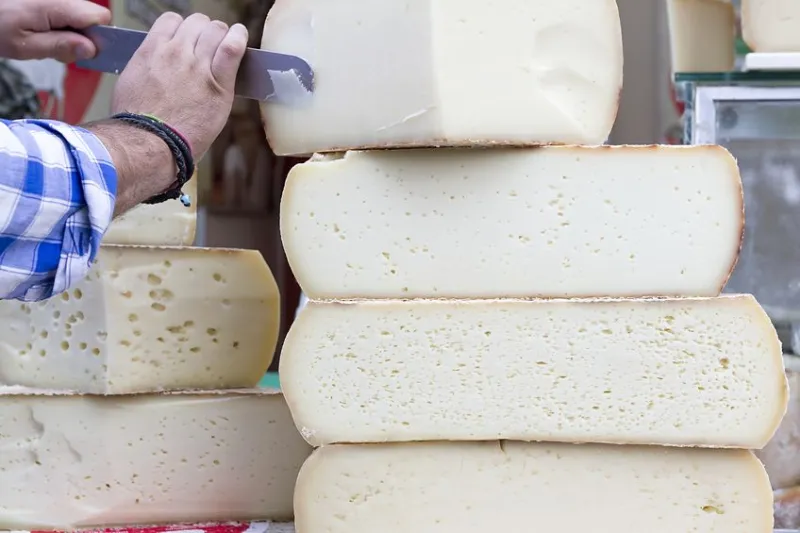
The ancient Greeks appreciated the value of cheese as a food so as to call it a "divine gift". It is worldwide known in Greece the annual per capita consumption is higher than in any other European country. Particularly in Crete, livestock farming (goat and sheep farming) sector has always been one of the most developed ones in Greece. This mean lots and lots of pure distinguished cheeses that are consumed in Crete at any hour of the day as an accompaniment or as the main ingredient, as appetizer or for dessert.
Anthotiros: Cheese from a mixture of whey and fresh milk with a cohesive mass and minimal salt. It has a maximum humidity of 70% and a minimum fatty acid content of 65% on a dry basis. It is produced from sheep's and goat's milk. It matures with time and salt, hardens and loses moisture. Its name comeσ from the cheese's blossom. It is suitable for pasta. Cretan Graviera: Flavour slightly salty, full of butter and milk proteins. It is made from sheep and goat milk. The best quality is when produced from pure sheep. It is prepared in "heads" weighing from 5 to 25 kg. Its analysis is: Moisture 38%, fat 38.4% on dry basis, salt 1.5%. It is eaten raw with fruit and bread, topped with honey, cooked in pies, also baked like "saganaki". Myzithra: A cheese that is made all over Greece and comes from the cheeses of other cheese. It's a soft, almost lean, creamy cheese with soft and neutral flavour results. It is high in fat that should be consumed carefully in a diet. It has an average of 70% moisture, and 50% fat on dry basis. Used also for pastry. It accompanies fresh fruit and is served as an appetizer or dessert with honey. Xinomyzithra: An exclusively Cretan cheese where whey and fresh milk are allowed to sour for 24 hours at natural temperature. It is produced from sheep or goat milk. It has moisture 50%, fat 23%, proteins 15% and salt 2%. It is ideal for pies and diets. Staka: Between cheese and yogurt, staka is another distinguished Cretan product. The milk chips (cream) are milled slightly and stored. When a good amount is gathered, it is heated to low heat for several days and a small amount of flour is added, thus separating the proteins from the fat. The fat is harvested separately and is the famous starch butter, while the white and coarse mass of proteins is the famous staka. Cooked with eggs, spaghetti, pilaf or pies.



Airbnb superhost since 2014

Hellenic Association
of Travel & Tourist Agencies
